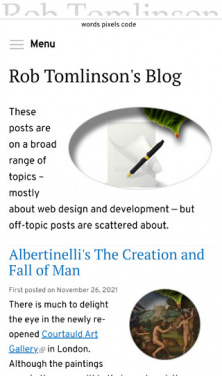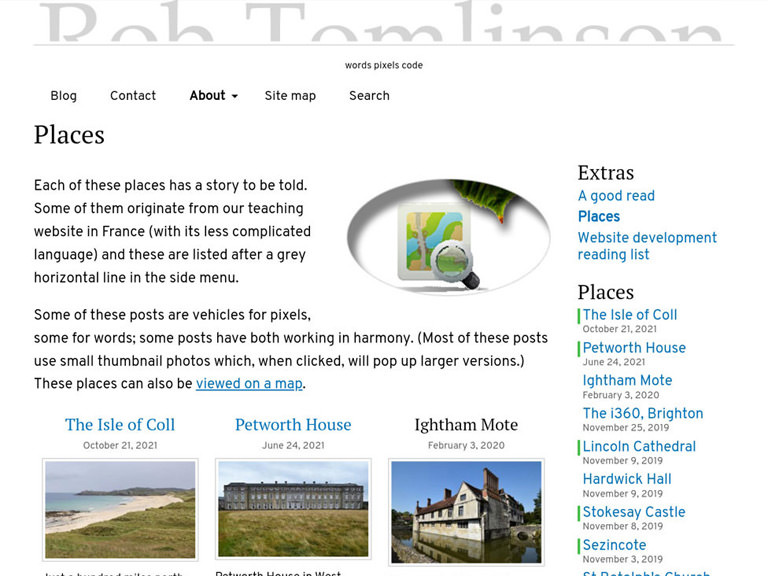The website has been a software/website freelancer’s shop window since 1999, moving from the .NET framework to Drupal 6 in 2010, then to D7 in 2012, and most recently to Backdrop in 2020.
Now enjoying retirement, Rob keeps the site going as a platform for writing book reviews and essays, posts about historic buildings, art, and topics related to web design and development, often specifically about Backdrop CMS. It is an ad-free, cookie-free (and Symfony-free) site built with the richness of a fast and sophisticated open-source CMS.
Quick links: blog index, places index (and with a map), book review index, website development reading list (and as a timeline), and an eye-watering site map!
The site was a Drupal 7 site of some complexity (200+ nodes, 10 each of content types and taxonomies). Following D7’s end-of-life announcement, various attempts were made to move to D8, but with no success. Backdrop CMS was the natural solution, and so this has proved. If you have a D7 site, Backdrop will be your comfortable pair of slip-ons and you will not look back.
Drupal modules are continuously being ported to Backdrop to the extent that there’s little D7 functionality that can’t be accomplished with aplomb. Using Leaflet maps and timelines is thrilling; building conditional Views queries is a breeze.
This site uses no custom modules, and has required minimal theme coding. Correctly configured, Backdrop is capable of meeting exacting demands. By progressively stripping out default field wrappers from Views’ output, the result is a streamlined flow of clean, valid code. Meeting multiple UX objectives has helped the textual and photographic content to be given maximum respect. All users benefit from this mobile-first site’s compliance with accessibility standards.
Although no longer supporting a web business, this Backdrop CMS website is the ideal vehicle for continuing to deliver resources of interest to a wider range of visitors.


